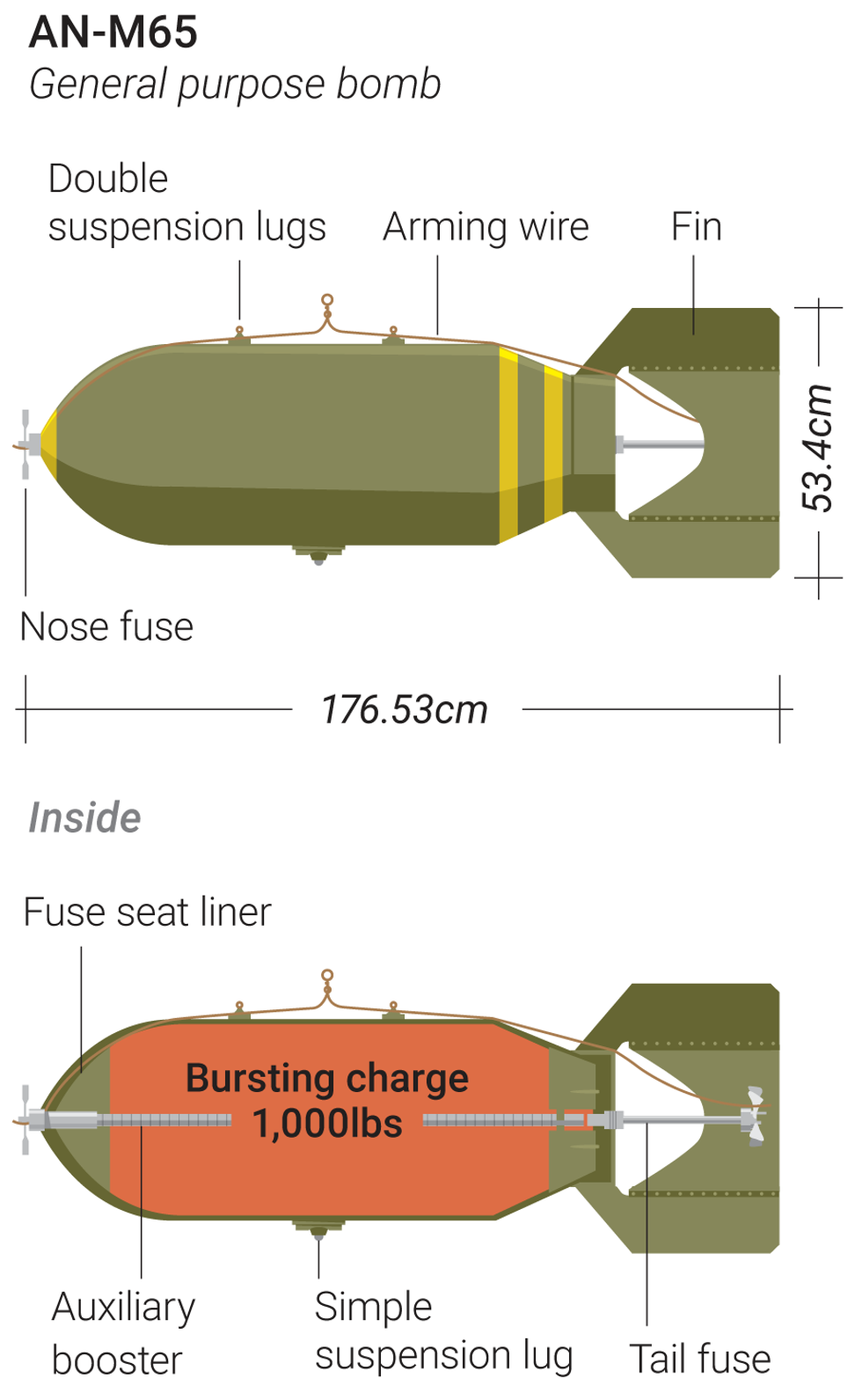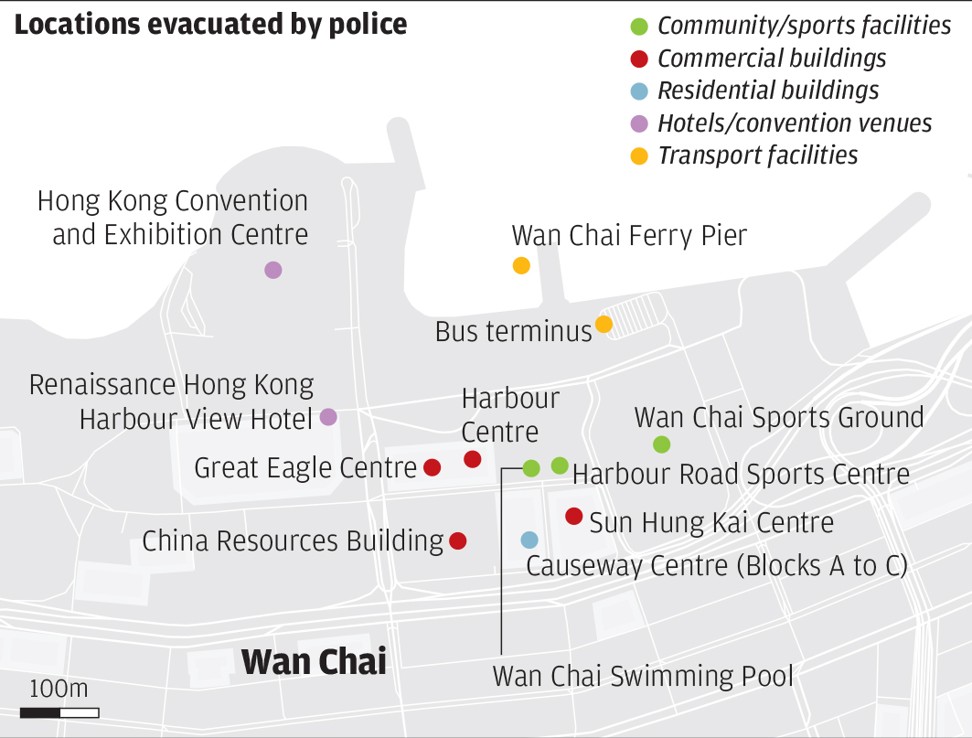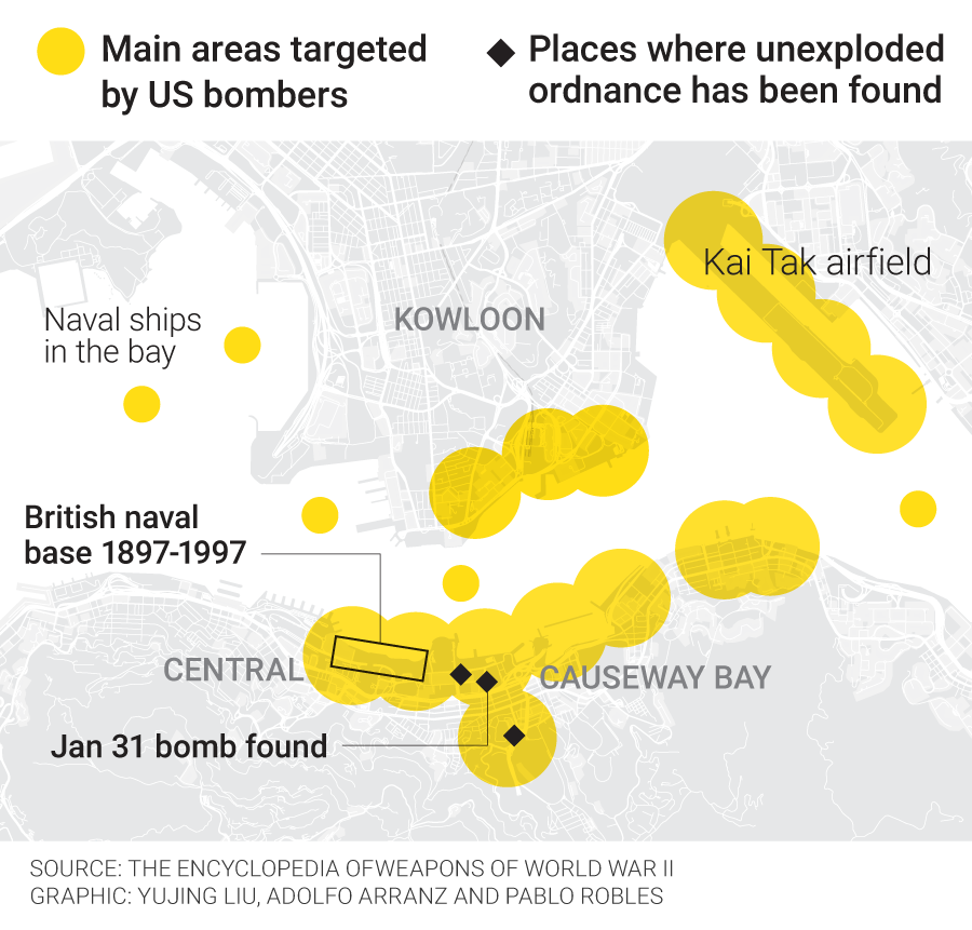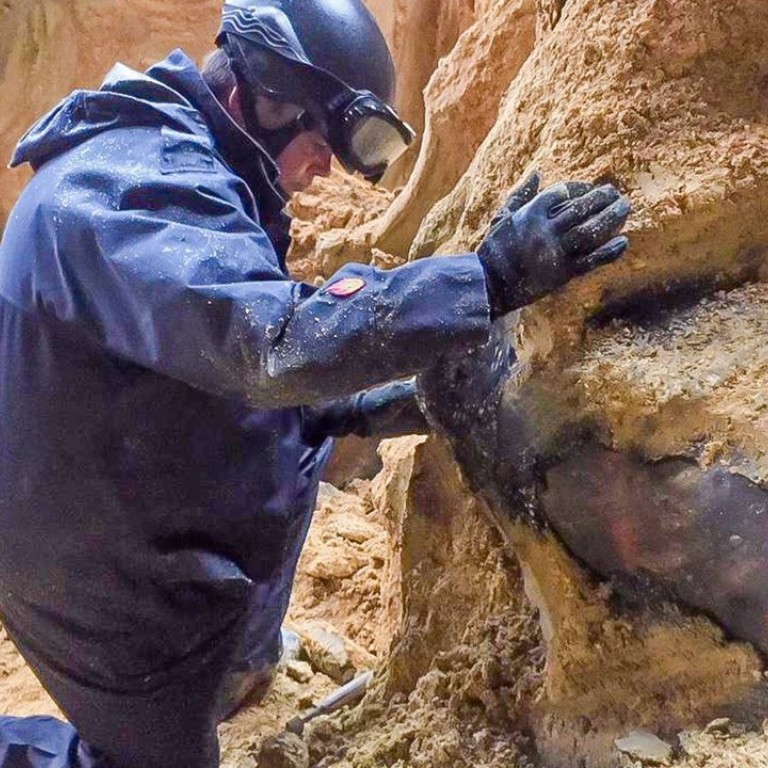
Major evacuation continues after second bomb found at Hong Kong site where 450kg wartime explosive unearthed at weekend
Ferries cancelled, roads closed and school sports meeting cut short as police begin operation at building site of Sha Tin-Central rail link in Wan Chai
The area was expected to be shut until Thursday morning as the unexploded ordnance from the second world war was deemed to be in a dangerous position and severely damaged, requiring more time to be defused.
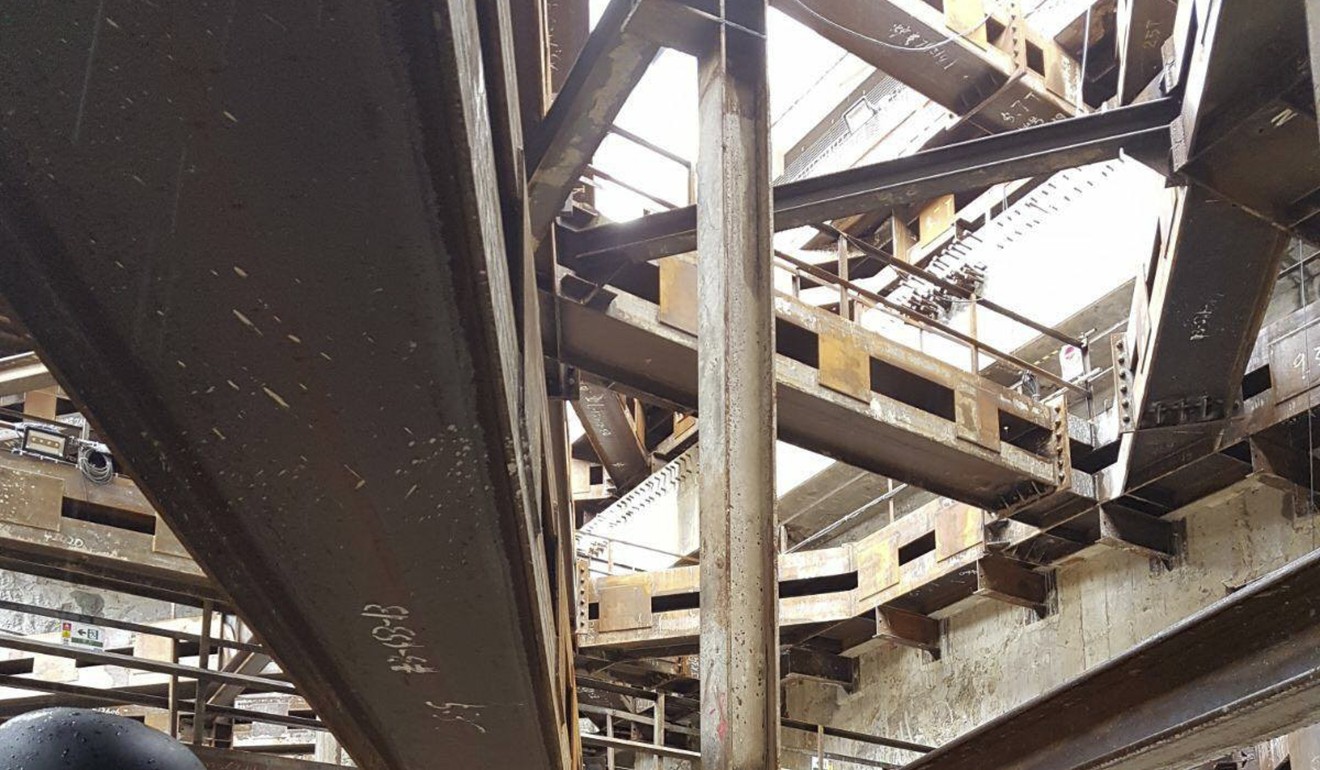
At 11pm, after the evacuation was finished, police said a total of 4,600 people had been evacuated from the area, including 1,500 from the Harbour Centre and 1,000 from Wan Chai Sports Ground.
Bomb disposal officer Alick McWhirter said the American AN-M65 device was found embedded in the ground just 10 metres from where the first one was discovered five days earlier.
Hong Kong’s buried wartime bombs – how did they get there?
“The bomb is in a dangerous condition. The fuse mechanism is severely damaged and the bomb’s position is making it difficult for our equipment to gain optimum access,” McWhirter said, adding that officers would have to continue overnight to prepare equipment and carry out stabilisation work.
“The more the rain comes down [the more difficult the operation]. It is unstable ground. The water made the bomb difficult to secure, which is quite important when you try to stabilise it.”
Hong Kong’s ticking time bomb: unexploded wartime ordnance
McWhirter could not say how long it would take to complete the mission.
The bomb was discovered at a building site for the Sha Tin-Central rail link at the junction of Convention Avenue and Tonnochy Road. A worker made a report to police at 11.15am.
Police targeted nearby buildings for evacuation, including the Great Eagle Centre and Sun Hung Kai Centre.
More roads around Wan Chai were to be closed after 9pm while at least 27 bus routes were diverted.
Major arteries across Central, Wan Chai and Causeway Bay were expected to be severely clogged.
How did two American-made bombs from the second world war end up in a Hong Kong subway construction site?
Harbour Drive and the section of Harbour Road between Fleming Road and Tonnochy Road were closed to traffic shortly before 3pm. Star Ferry services between Wan Chai and Tsim Sha Tsui were suspended soon after.
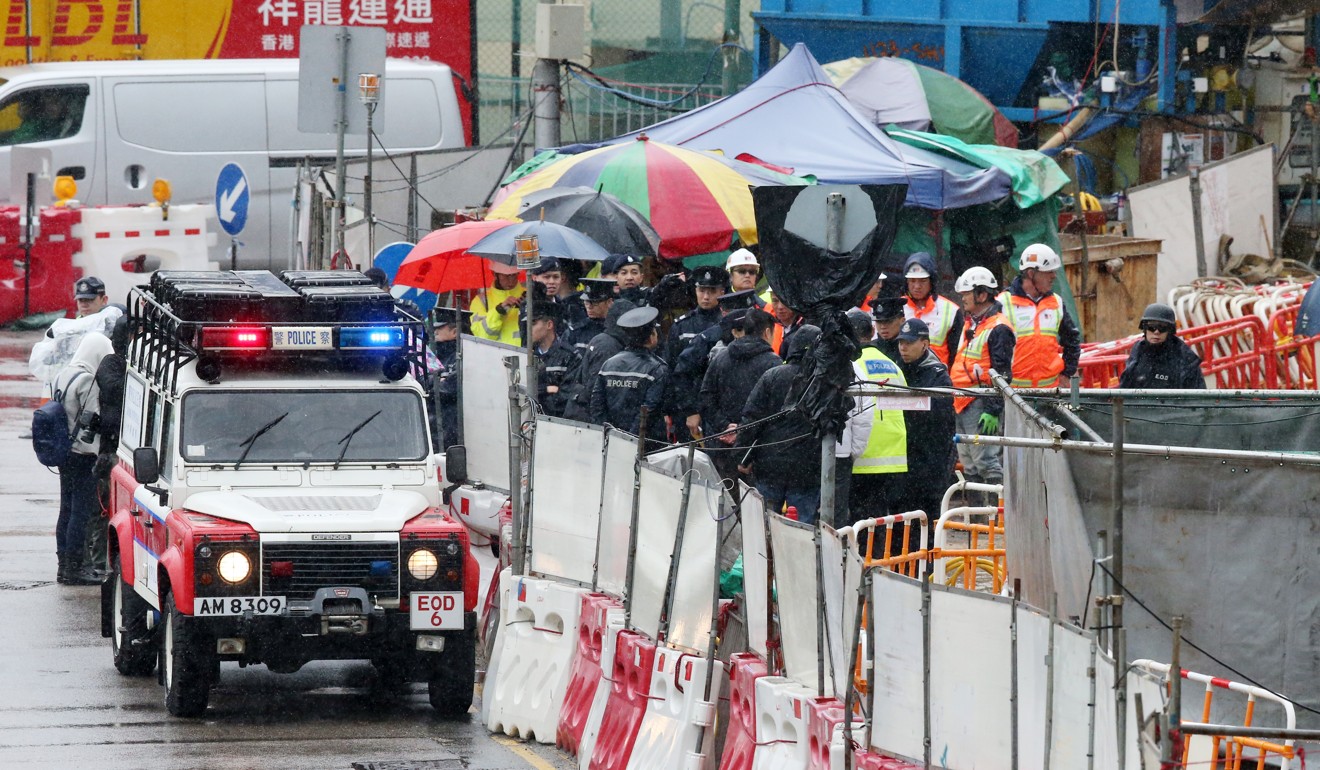
A pedestrian bridge leading to the Wan Chai Sports Ground and the Harbour Sports Centre was closed off at about 1pm.
Police said pupils in the stadium, which had been open for an interschool athletics meeting, had to be evacuated from the ground soon after the bomb was discovered.
Secondary school pupil Shelley Lai Ka-yi, 14, said 300 to 400 pupils from about 40 schools who were at the event had to clear the stadium.
“We saw groups of police coming in, and we were told the competition had to be cancelled and we had to get out,” Lai said.
The competition was supposed to run until 4pm. Lai said her teachers were told to take their students back to school for lessons for the rest of the day.

Next to the stadium, Sun Hung Kai Centre, a high-rise office complex, was evacuated at about 1.30pm.
Office workers flooded the lobby after they heard an intercom announcement that the building would be closed.
“Our office said the doors would close in five minutes and to go home for the day. We don’t know how long it’ll take for them to defuse the bomb, so we just took our work home with us,” Shirley Sin, who works at a fashion company in the building, said.

Workers from several office towers along a stretch of Gloucester Road – including Central Plaza, Great Eagle Centre and China Resources Building – started making their way home. Some said their companies had not received any orders from police but had decided of their own accord to close for the day.
Management and reception staff at the Hong Kong Convention and Exhibition Centre and the Renaissance Harbour View Hotel, which was evacuated when the previous bomb was found, said they had yet to receive any emergency alerts or notice from police to clear out.
Peter Larsson, a Swedish tourist staying at the Renaissance, said staff were arranging for him to move to a different room on another side of the hotel, but he was told it might also be at another hotel.
“I don’t think there has been any inconvenience caused, everything was handled well,” Larsson said.

On Saturday, police carried out a major bomb disposal operation, closing roads and evacuating 1,300 people, including nearby hotel guests, after a 450kg wartime bomb was unearthed at the same building site.
Demolitions experts defused the bomb at about 1pm on Sunday after 25 hours of road closures and mass evacuations in the area.
The device, dating back to the second world war, is thought to have been dropped by US warplanes some time between 1941 and 1945.
Police said the 225kg of explosives inside the device could have sent shrapnel flying up to 2km if it had gone off.
Bomb discoveries have become a relatively frequent occurrence in Hong Kong in recent years.
War’s underground legacy
Saturday’s and Wednesday’s finds were not the biggest wartime bombs dug up in Hong Kong. In February 2014, a 907kg (2,000lbs) bomb was discovered on a construction site in Happy Valley. The device, an AN-M66, was the biggest of its kind dropped on Hong Kong by US bombers. When it was found, more than 2,000 people were evacuated from nearby buildings.
Most wartime bombs found over the past decade were in the northern districts of Hong Kong Island, from Central to Wan Chai.
According to Kwong Chi-man, an assistant professor at Hong Kong Baptist University specialising in modern military history, that is because the British Royal Navy base was located at what is now Tamar, in Admiralty, from 1897 to 1997. The Japanese took over the base after they invaded and occupied the city in 1941. As Hong Kong became a logistics centre for the Japanese military in the South China Sea during the occupation, the US Air Force focused on attacking the city and the areas near the naval base.
Additional reporting by Danny Mok.





